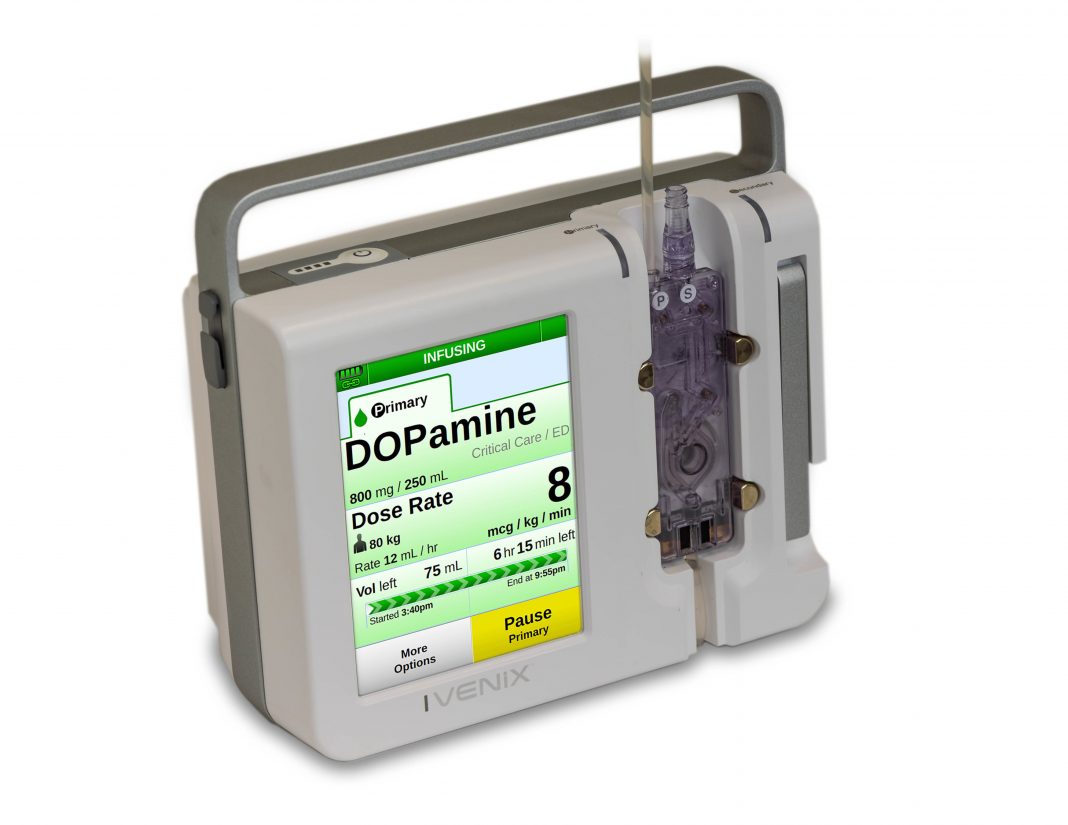Medical technology innovator Ivenix collaborated with Eastman to incorporate Eastman Tritan™ MXF copolyester into its groundbreaking Ivenix Infusion System. The new system includes a large-volume infusion pump, a portfolio of administration sets, and a suite of IV management tools and analytics to inform care and advance clinical and operational efficiency.
Ivenix selected Tritan MXF for the pump exterior because of its excellent chemical resistance and durability in the face of the aggressive disinfection protocols needed to prevent the spread of healthcare-associated infections (HAIs).
“The Ivenix Infusion System has several key advantages over our competition—one being its durability in real-world clinical environments,” said Josh North, director of sales at Ivenix. “The ability to stand up to the short kill-time disinfectants like quaternary ammonium and ammonium chloride resonates with infection prevention and patient safety teams. Also, our pumps successfully endure the ‘tough love’ experienced in day-to-day clinical use, and this has a real impact on repair costs and downtime for our customers.”
Because Tritan MXF is resistant to a larger number of disinfectants, infection preventionists can rest easy knowing that they can choose from a variety of cleaners and wipes that won’t adversely impact their devices. This simplifies cleaning protocols and alleviates worries about voiding warranties because the wrong cleaner was used.
Among hospital patients, 90% require the use of infusion pumps, critical medical devices that deliver fluids such as essential nutrients and medications into a patient’s body in controlled amounts. They are also the number one medical device plagued with significant safety issues related to failures. Infusion pump failures—such as broken components, corrosion of electric pins and even cracks, no matter the size—can compromise the safe use of pumps and lead to catastrophic outcomes for patients.
Infusion pumps, like many medical devices, are constantly handled by multiple people, are moved across many environments, and can get dropped or bumped on hard surfaces. Frequent cleaning, like that endured by medical devices (often on an hourly basis), can weaken typical polymers used in device housings, making them brittle and more likely to crack.
Recognizing the link between chemical resistance, impact and device failure, Ivenix needed a polymer for the pump’s exterior housing that would address all these issues. The company selected Tritan MXF early in the design process, because it demonstrates the right combination of properties to provide lightweight durability and chemical resistance.
Eastman’s medical polymers enable Ivenix to deliver an infusion pump that is stronger and more disinfectant ready, contributing to more consistent device performance, longevity and, ultimately, patient safety. To learn more about how material choice impacts IV pump failures and cleaning the Ivenix Infusion System, visit here.
